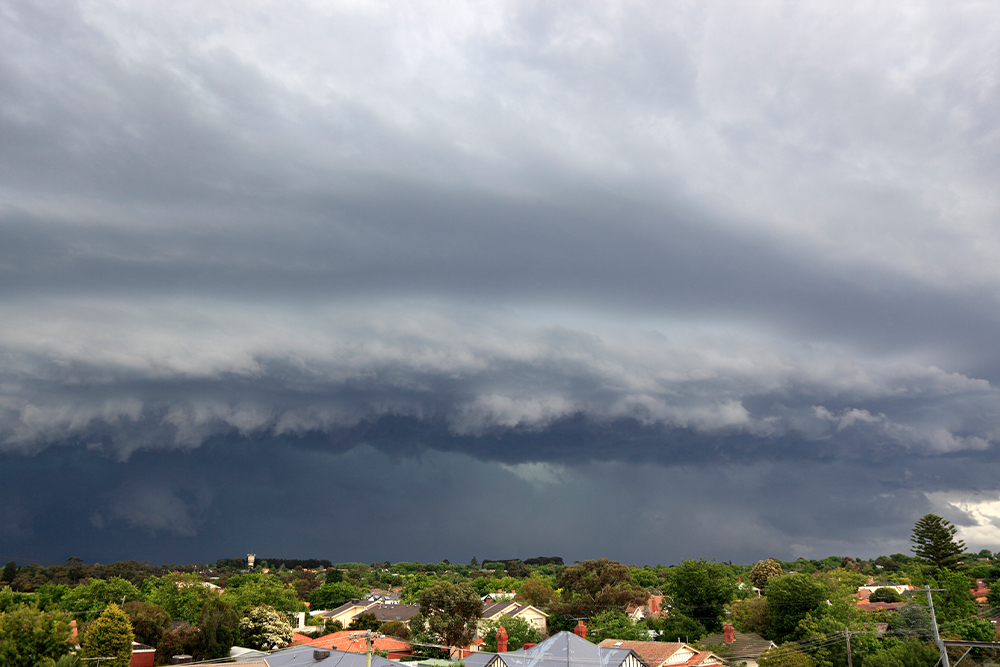Get prepared before the storm
How to prepare for a cyclone or storm in Queensland: your essential tips and preparation checklist.

As Queenslanders, we love our sunshine, but we also know that storms are a part of life. Knowing how to prepare for potential storms, hail or cyclones can help you protect what’s most important to you. Be sure to check out these essential tips to protect your home and car.
There are a few practical tasks you can do around the home to reduce the risk of damage. This includes:
- Trimming trees and removing dead branches to reduce the risk of damage from fallen objects.
- Regular roof maintenance, like clearing gutters and securing loose tiles to help prevent leaks.
- Storing or securing outdoor furniture and other loose items to prevent them from becoming dangerous projectiles.
By staying proactive, you can protect your home and property from severe weather.
Have a plan as the storm approaches
If severe weather is imminent, think about the precautions you'll need to take.
- Guard against power surges- unplug appliances and turn off electricity to the house.
- Turn off the gas and water if a cyclone warning is issued in your area.
- Have an emergency kit on-hand with essential items. Find out what to include in your kit here.
- Secure windows and doors and stay up to date with emergency alerts for your area.
- Moving vehicles undercover and securing boats in a safe location to minimise damage.
These measures may not only protect your home but also yourself and your loved ones.
How to prepare your car for hail and storm season
Severe storms, particularly those with large hail, can severely damage vehicles, often beyond repair.
Preparing your car before the storm
Parking in a garage is the best way to protect your car, but if that's not an option, there are other ways to minimise damage.
Consider leaving your car in a covered shopping centre car park or a carport for some protection. Investing in a padded car cover can also help. If you don’t have a car cover, use blankets to protect your car and place floor mats on the windscreen to shield against hail.
What to do if you’re caught driving in a storm
If you find yourself driving during a severe storm or hail, slow down, turn your lights on, double your following distance to the car in front to at least four seconds (allow more space if you are towing) and find a safe spot to stop well away from high-speed traffic, not on the side of a highway or motorway. It’s also important to remember, if it’s flooded forget it. It is never safe to drive through floodwaters.
For more on how you can prepare your car for a storm check out our vehicle safety video.
The importance of insurance
Getting the right insurance for your home and car is another important part of storm season preparation. It’s important to understand what you’re covered for in your insurance policy. RACQ’s Comprehensive Home Insurance and Comprehensive Car Insurance includes flood, storm, and hail as standard*, but other insurers may be different.
You should also check that your sum insured amount will cover the cost of rebuilding or replacing your home and/or contents, and if your car is insured as an agreed value, that the amount is in line with the cost of your car in today’s market.
Related topics
-
The information in this article has been prepared for general information purposes only and is not intended as legal advice or specific advice to any particular person. Any advice contained in the document is general advice, not intended as legal advice or professional advice and does not take into account any person’s particular circumstances. Before acting on anything based on this advice you should consider its appropriateness to you, having regard to your objectives and needs.
Insurance products (excluding Travel Insurance) are issued by RACQ Insurance Limited ABN 50 009 704 152 (RACQ). Conditions, limits and exclusions apply. This is general advice only and may not be right for you. This information does not take your personal objectives, circumstances or needs into account. Read the Product Disclosure Statement (PDS) and any applicable Supplementary PDS before making a purchase decision on this product. You can also access our Target Market Determinations on this website.
Banking and loan products issued by Members Banking Group Limited ABN 83 087 651 054 AFSL/Australian credit licence 241195 trading as RACQ Bank. Terms, conditions, fees, charges and lending policies apply. This is general advice only and may not be right for you. This information does not take your personal objectives, circumstances or needs into account. Read the disclosure documents for your selected product or service, including the Financial Services Guide and the Terms and Conditions, and consider if appropriate for you before deciding.
Except for RACQ Bank, any RACQ entity referred to on this page is not an authorised deposit-taking institution for the purposes of the Banking Act 1959 (Cth). That entity’s obligations do not represent deposits or other liabilities of RACQ Bank. RACQ Bank does not guarantee or otherwise provide assurance in respect of the obligations of that entity, unless noted otherwise.
RACQ Operations Pty Ltd (ABN 80 009 663 414 AR 000234978) and Members Travel Group Pty Ltd (ABN 45 144 538 803 AR 000432492) are acting as an Authorised Representative of the issuer of the insurance, Tokio Marine & Nichido Fire Insurance Co., Ltd. (ABN 80 000 438 291 AFSL 246 548). Any advice set out above is general in nature only, and does not take into account your objectives, financial situation or needs. Before purchasing any travel products, please consider the RACQ Travel Insurance Product Disclosure Statement (PDS) and the Target Market Determinations (TMDs) that apply to these products. Whilst the PDS outlines the Terms and Conditions of these products, the TMDs outline the intended class of customers that comprise the target market for these travel products. This will allow you to consider which products best suit your objectives, financial situation and needs and consider the products appropriateness to your personal circumstances. TMDs also outline matters involving the distribution and the review of these products. The PDS, Supplementary PDS and TMDs for each travel product can be found here.

